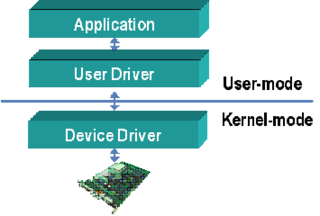Related Research Articles
In computer science, formal methods are mathematically rigorous techniques for the specification, development, analysis, and verification of software and hardware systems. The use of formal methods for software and hardware design is motivated by the expectation that, as in other engineering disciplines, performing appropriate mathematical analysis can contribute to the reliability and robustness of a design.
In computer science, communicating sequential processes (CSP) is a formal language for describing patterns of interaction in concurrent systems. It is a member of the family of mathematical theories of concurrency known as process algebras, or process calculi, based on message passing via channels. CSP was highly influential in the design of the occam programming language and also influenced the design of programming languages such as Limbo, RaftLib, Erlang, Go, Crystal, and Clojure's core.async.
In the context of hardware and software systems, formal verification is the act of proving or disproving the correctness of a system with respect to a certain formal specification or property, using formal methods of mathematics. Formal verification is a key incentive for formal specification of systems, and is at the core of formal methods. It represents an important dimension of analysis and verification in electronic design automation and is one approach to software verification. The use of formal verification enables the highest Evaluation Assurance Level (EAL7) in the framework of common criteria for computer security certification.

In computer science, model checking or property checking is a method for checking whether a finite-state model of a system meets a given specification. This is typically associated with hardware or software systems, where the specification contains liveness requirements as well as safety requirements.
In logic, linear temporal logic or linear-time temporal logic (LTL) is a modal temporal logic with modalities referring to time. In LTL, one can encode formulae about the future of paths, e.g., a condition will eventually be true, a condition will be true until another fact becomes true, etc. It is a fragment of the more complex CTL*, which additionally allows branching time and quantifiers. LTL is sometimes called propositional temporal logic, abbreviated PTL. In terms of expressive power, linear temporal logic (LTL) is a fragment of first-order logic.
Computation tree logic (CTL) is a branching-time logic, meaning that its model of time is a tree-like structure in which the future is not determined; there are different paths in the future, any one of which might be an actual path that is realized. It is used in formal verification of software or hardware artifacts, typically by software applications known as model checkers, which determine if a given artifact possesses safety or liveness properties. For example, CTL can specify that when some initial condition is satisfied, then all possible executions of a program avoid some undesirable condition. In this example, the safety property could be verified by a model checker that explores all possible transitions out of program states satisfying the initial condition and ensures that all such executions satisfy the property. Computation tree logic belongs to a class of temporal logics that includes linear temporal logic (LTL). Although there are properties expressible only in CTL and properties expressible only in LTL, all properties expressible in either logic can also be expressed in CTL*.
Formal equivalence checking process is a part of electronic design automation (EDA), commonly used during the development of digital integrated circuits, to formally prove that two representations of a circuit design exhibit exactly the same behavior.
SPIN is a general tool for verifying the correctness of concurrent software models in a rigorous and mostly automated fashion. It was written by Gerard J. Holzmann and others in the original Unix group of the Computing Sciences Research Center at Bell Labs, beginning in 1980. The software has been available freely since 1991, and continues to evolve to keep pace with new developments in the field.

Model-based testing is an application of model-based design for designing and optionally also executing artifacts to perform software testing or system testing. Models can be used to represent the desired behavior of a system under test (SUT), or to represent testing strategies and a test environment. The picture on the right depicts the former approach.
In software engineering, behavior-driven development (BDD) is a software development process that goes well with agile software development process that encourages collaboration among developers, quality assurance experts, and customer representatives in a software project. It encourages teams to use conversation and concrete examples to formalize a shared understanding of how the application should behave. It emerged from test-driven development (TDD). Behavior-driven development combines the general techniques and principles of TDD with ideas from domain-driven design and object-oriented analysis and design to provide software development and management teams with shared tools and a shared process to collaborate on software development.
System File Checker (SFC) is a utility in Microsoft Windows that allows users to scan for and restore corrupted Windows system files.
Rebeca is an actor-based modeling language with a formal foundation, designed in an effort to bridge the gap between formal verification approaches and real applications. It can be considered as a reference model for concurrent computation, based on an operational interpretation of the actor model. It is also a platform for developing object-based concurrent systems in practice.
PROMELA is a verification modeling language introduced by Gerard J. Holzmann. The language allows for the dynamic creation of concurrent processes to model, for example, distributed systems. In PROMELA models, communication via message channels can be defined to be synchronous, or asynchronous. PROMELA models can be analyzed with the SPIN model checker, to verify that the modeled system produces the desired behavior. An implementation verified with Isabelle/HOL is also available, as part of the Computer Aided Verification of Automata (CAVA) project. Files written in Promela traditionally have a .pml file extension.
The Unix command fuser is used to show which processes are using a specified computer file, file system, or Unix socket.

CADP is a toolbox for the design of communication protocols and distributed systems. CADP is developed by the CONVECS team at INRIA Rhone-Alpes and connected to various complementary tools. CADP is maintained, regularly improved, and used in many industrial projects.

Device drivers are programs which allow software or higher-level computer programs to interact with a hardware device. These software components act as a link between the devices and the operating systems, communicating with each of these systems and executing commands. They provide an abstraction layer for the software above and also mediate the communication between the operating system kernel and the devices below.
Murφ is an explicit-state model checker developed at Stanford University, and widely used for formal verification of cache-coherence protocols.

Principles of Model Checking is a textbook on model checking, an area of computer science that automates the problem of determining if a machine meets specification requirements. It was written by Christel Baier and Joost-Pieter Katoen, and published in 2008 by MIT Press.

Kenneth L. McMillan is an American computer scientist working in the area of formal methods, logic, and programming languages. He is a professor in the computer science department at the University of Texas at Austin, where he holds the Admiral B.R. Inman Centennial Chair in Computing Theory.